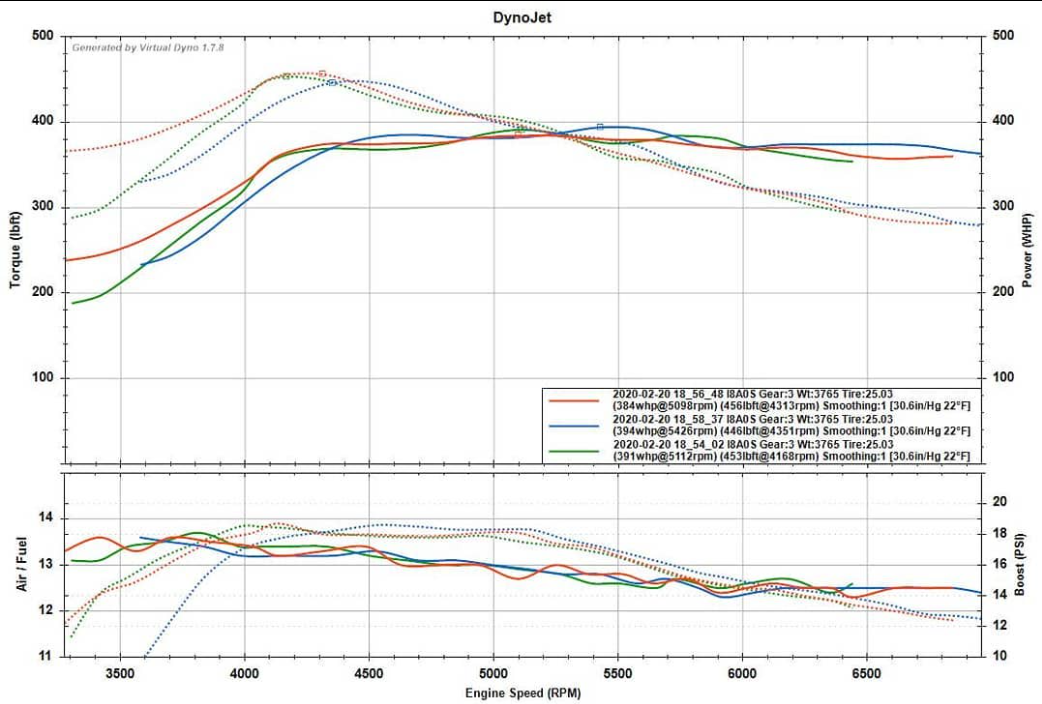BMW 335i Performance Build

Project Overview
I purchased a 2007 BMW 335i sedan in stock condition with approximately 168,000 miles. Over the course of the build I completed a full set of bolt-on modifications and carried out comprehensive repairs to restore reliability and improve performance. The project demonstrates hands-on mechanical skills, ECU/software tuning, diagnostics, and systematic problem-solving across mechanical and electronic systems.
Vehicle Specifications
Performance Modifications
Engine & Forced Induction
- Intercooler and charge piping
- Cold air intake
- Blow-off / diverter valve
- Upgraded fuel pump (LPFP)
Custom Tuning
The car was tuned using MHD for engine calibration and XHP for transmission strategy tuning. I used BMW ISTA software to diagnose and clear codes and to update/reprogram stock firmware where needed (for example, addressing injector coding after replacement and resolving aftermarket stereo code conflicts). Datalogging was performed during tuning sessions to monitor AFR, ignition timing, boost, and fuel trims; iterative adjustments were made until target performance and reliability goals were met.
Modifications & Repairs
- Full bolt-on upgrades (intercooler, charge pipe, blow-off / diverter valve)
- Cold air intake; cleaned intake carbon buildup
- Upgraded fuel system: upgraded low-pressure fuel pump (LPFP) and related inlet/outlet plumbing
- Spark plugs replacement and ignition system checks
- Oil catch can installation
- Repaired radiator and cooling system service
- Diagnosed and fixed injector-related misfire; injector programming via ISTA
- Transmission tuning with XHP and fluid replacement/service
- Full fluids service: motor oil, transmission fluid, differential fluid, brake fluid
- Brake service and replacement as needed
- Headlight restoration and upgraded headlight bulbs
- Sunroof carpet repair and interior maintenance
- Replaced water pump and power steering pump
- Hand-sewn leather steering wheel cover installed
Technical Challenges & Solutions
Diagnostics & Troubleshooting
I used INPA, ISTA, and an OBD‑II scanner to diagnose the issues; the power upgrades overloaded MOSFETs on the ECU (which I repaired by replacing the failed MOSFETs), and I also repaired ignition wiring chewed by mice that had caused similar ECU damage.
System Integration
The N54 platform requires careful attention to the interaction between mechanical upgrades and electronic engine management. Each modification required understanding how it would affect fueling, boost control, ignition timing, and other parameters.
Skills Applied
- Systems Thinking: Understanding how mechanical, electrical, and software systems interact
- Data Analysis: Interpreting datalogs to optimize performance and reliability
- Troubleshooting: Systematic diagnosis of complex issues using diagnostic tools
- Risk Management: Balancing performance gains with reliability and longevity
- Documentation: Maintaining detailed records of modifications and tuning sessions
Performance Results
Measured on a chassis dyno, the car showed a dramatic improvement over stock. Where the N54 platform commonly produced roughly 300 hp in stock form, this build recorded 400+ wheel horsepower after tuning and supporting hardware upgrades (see dyno image below). The build delivered large gains across the powerband—stronger midrange torque, earlier turbo spool, and a much more responsive throttle.
On the road and track the differences were immediately noticeable: sharper throttle response, more consistent boost delivery, cleaner power under load, and improved passing ability. Transmission tuning with XHP smoothed shift behavior and reduced interruption during aggressive up/down shifts. Overall the car feels significantly quicker and more tractable—especially during midrange acceleration and repeat track runs.

Relevance to Engineering
This project demonstrates the same analytical and hands-on skills I apply to engineering work: understanding complex systems, diagnosing problems methodically, managing trade-offs, and optimizing performance within constraints. The process of tuning a turbocharged engine is fundamentally similar to optimizing any engineered system—data collection, analysis, iteration, and validation.